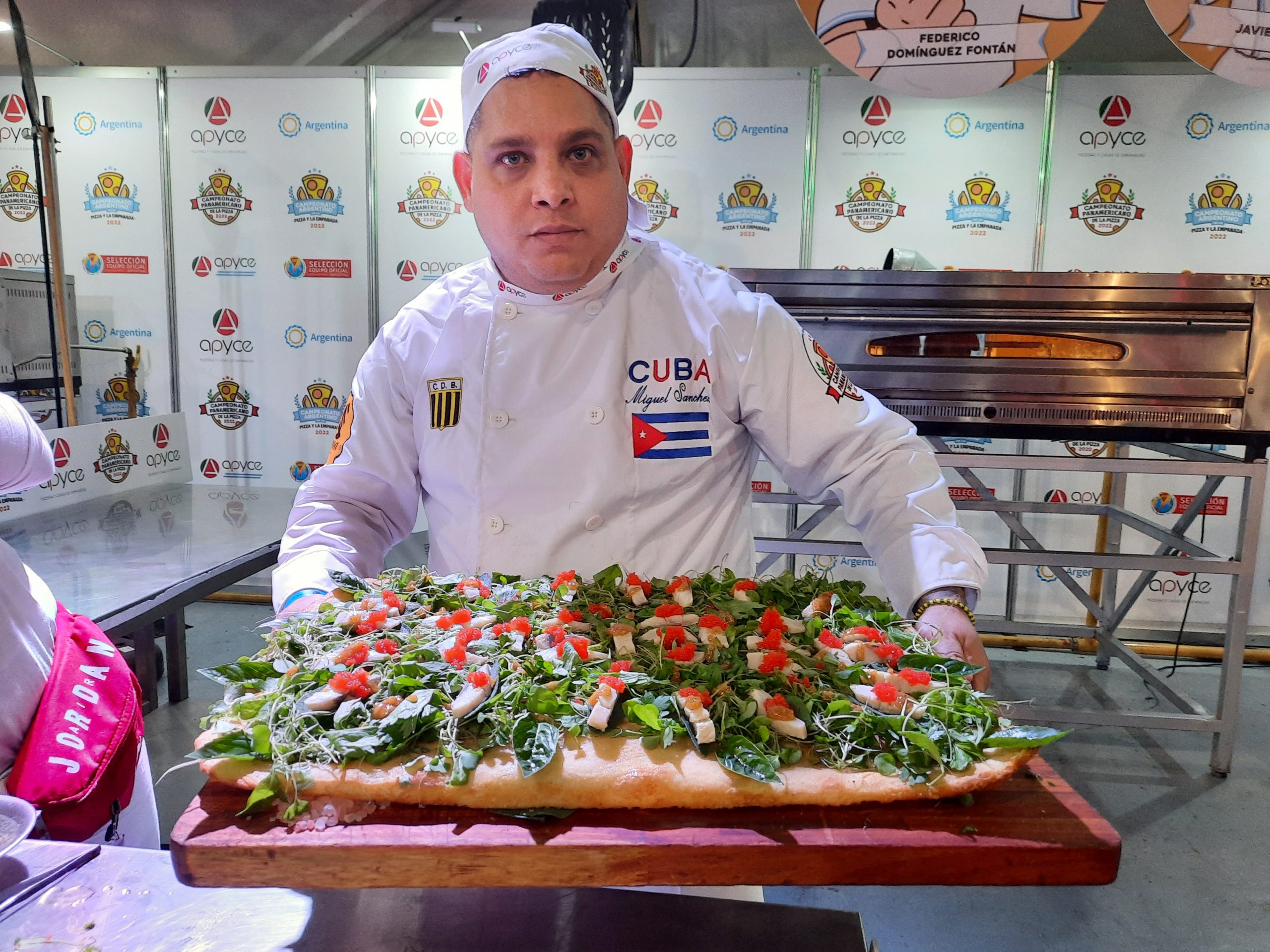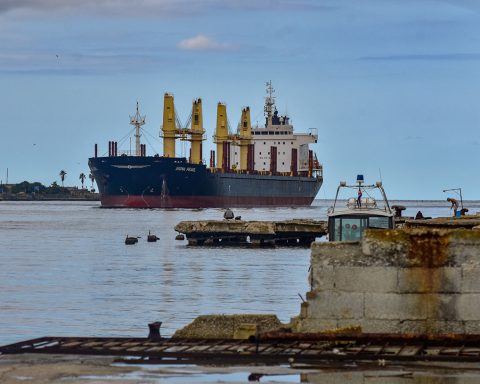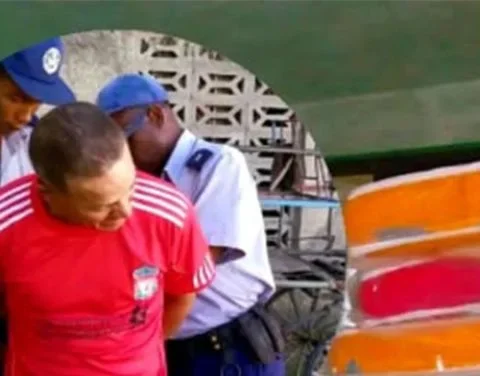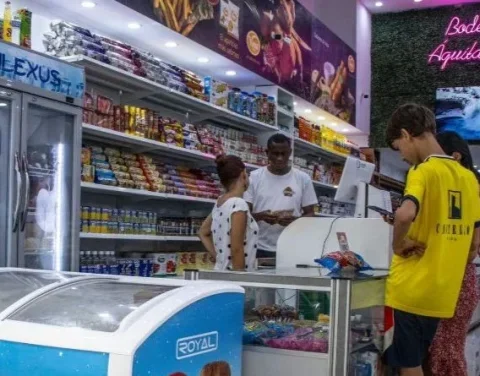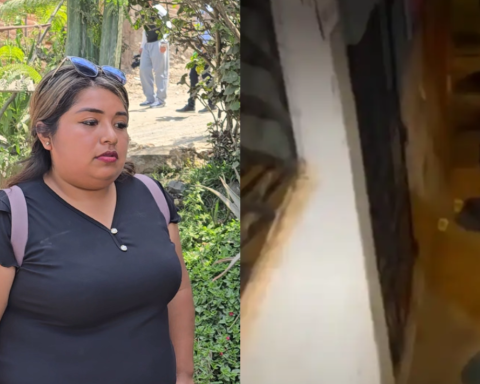“The first round is three pizzas, if I pass I go to the semifinal and I have to present a pizza from my country,” Miguel Sánchez told me before the time came to meet the 12 semifinalists of the Pan American Pizza Championshipin Buenos Aires.
What he had prepared was a surprise, but also a leap of imagination, and only his wife knew it. She, who accompanied Sánchez preparing the recipes for the competition, told me that they had never before prepared the formula that she was about to reveal to me.
The fumes floated inside one of the pavilions of Costa Salguero, a complex located next to the Rio de la Plata. The warm atmosphere due to the 12 ovens (10 gas and 2 wood) contrasted with the cold and the strange fog that proliferated outside, as had been happening for days in Buenos Aires.
Sánchez had just put the last of the rockets on his baked dough as part of the “Pizza in teglia” modality. He had carried the tray to a table at the entrance to the jury area and was waiting to be called. Jorge Luis Hernández, another Cuban in competition, also arrived there.
I speak with one of the floor juries in this stadium of a competition that has brought together 150 pizza masters from nations such as the United States, Mexico, Cuba, Haiti, Venezuela, Colombia, Peru, Paraguay, Brazil, Uruguay, Chile and Argentina, although the Two Cubans with whom I speak have lived in Buenos Aires for years. “Living in Cuba it is impossible to participate in a championship like this,” Miguel had told me.
The jury is called Hugo Bazán and last year he obtained fourth place in the World Championship in Italy. He explains to me that “Pizza in teglia” is a large dough cooked in a mold and that it is four to five centimeters high, 60 by forty is the standard measure. The deck must be balanced.
The one I saw, prepared by Sánchez, had arugula sprouts and smoked Baltic Sea herring, sturgeon caviar roe and black truffle pesto.

He had previously impressed with other ingredients. “I made a gluten-free, 100 percent organic pizza with edible flowers. The second was a pizza on a shovel, with a very good preference; I decorated it with mushrooms, dried tomatoes, blue cheese bechamel and 24-quart edible gold leaf”.
“Edible gold foil?… But why do I want that on my plate?” I say. “It’s indulging,” he replies: “They are edible gold sheets that are imported from Turkey.”
“What does a pizza have to have to be good?” I ask him. “Luck has a lot to do with it; later, the times, that the masses take you well, that they have their good alveolus, that the combination of the covers is the flavor together”.
Miguel is a native of Havana, from the Jesús María neighborhood. He is forty years old and has been in Argentina for 17 years, where he maintains his own business, “Mima pizzería”, located in the city of Berazategui.
“I became a pizza maker here out of necessity,” he says, and when he turns around I read the slogan “Homeland and Life” on his back. “I come to raise political awareness, because I think I should be doing this from my country, representing my country and not a government. I will not return nor do I intend to return. I am an exile 100%.”
While the jury finishes determining who the finalists will be, two announcers make some of the participants dance. Everyone has gathered behind a large screen and faces the two tables with the evaluators.
Each of them must have bitten off at least one of the pieces brought to them by some uniformed girls. Among them are award-winning grandmasters, people who have studied the art of pizza in Italy.
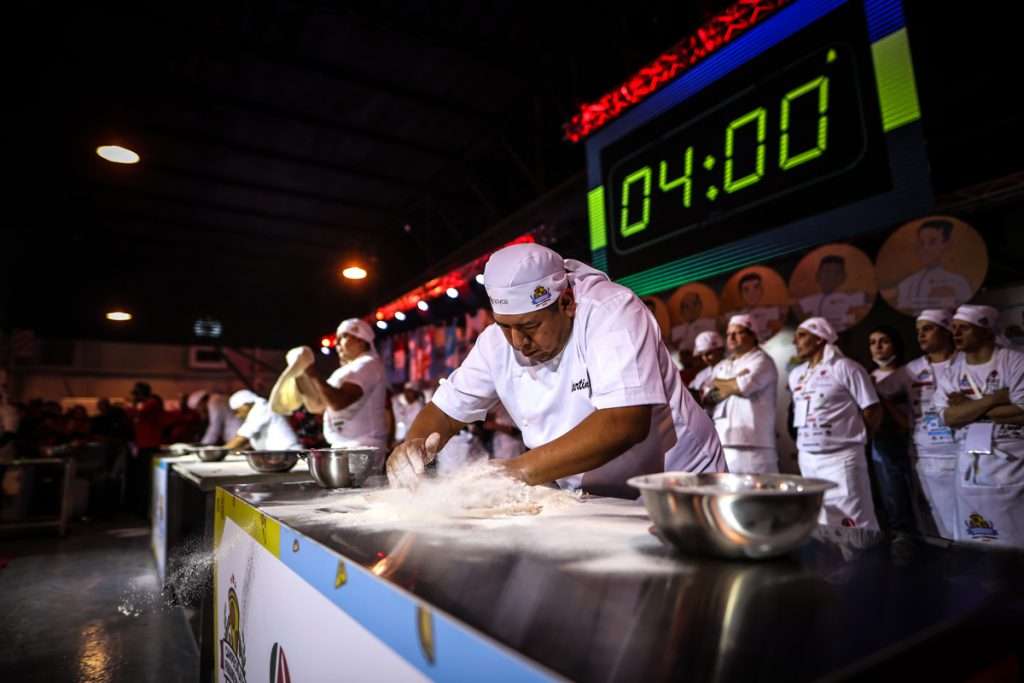
For Diego Dávila, another member of the Argentine team that recently participated in the World Cup in Italy, a good pizza has to have three characteristics to stand out among the best: “to be digestible; that is, that it enters the stomach and the body easily, is tasty, and friable, that is, that it disarms in the mouth”.
Finally the finalists are announced. Miguel Sánchez is one of them. He jumps for joy and his eyes are moistened when he reaches the site where the entertainers are located.
“Since in Cuba we don’t have a pizza like rice with beans and a fried egg, I thought of the most famous drink we have, which is the mojito. And chemically I broke it down into the pizza: the sparkling water for the dough, the sliced lemon, the brown sugar on top of the pizza, the yerbabuena leaves, and then we garnished it with some garlicky shrimp,” he told me.
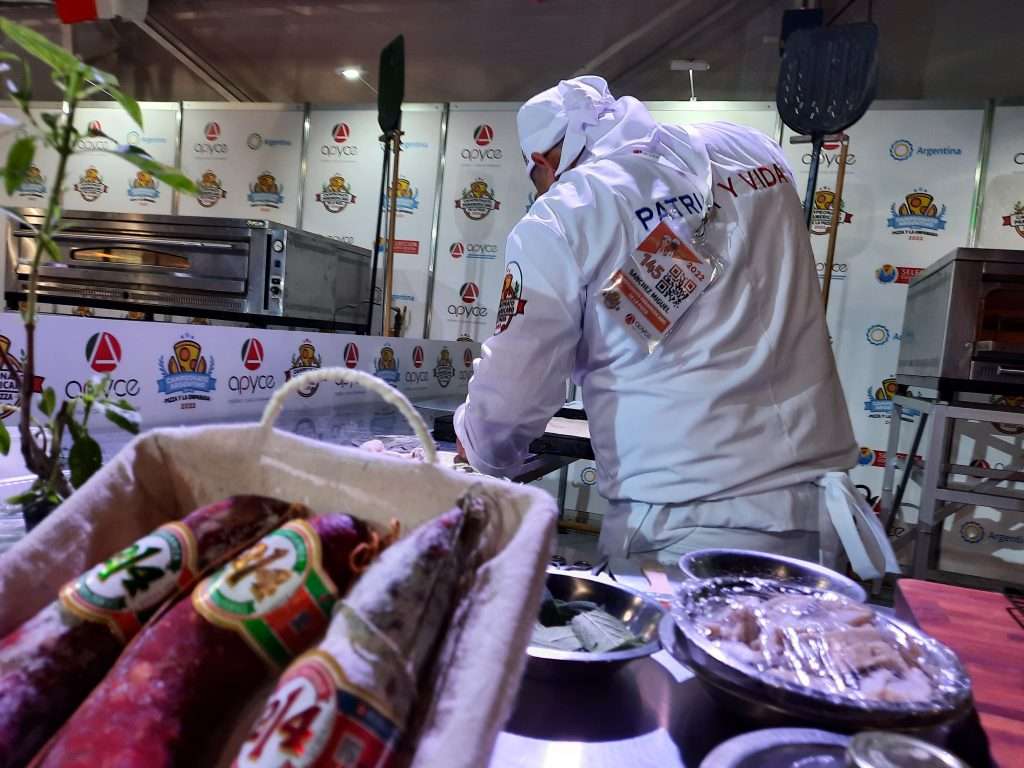
“Wouldn’t it have alcohol?” I ask. “Yes, she is flamed with rum”.
Miguel Sánchez was in fourth place, only surpassed by the Mexican Joshua Serrano (first), the Argentine Matías Iacono (second) and the also Mexican David Morales (third).
The II Pan-American Pizza Championship is organized by the Association of Pizzerias and Empanada Houses (Apyce), also sponsor of the Argentine Championship. Next year, in August, both organizers will host the World Championship.
